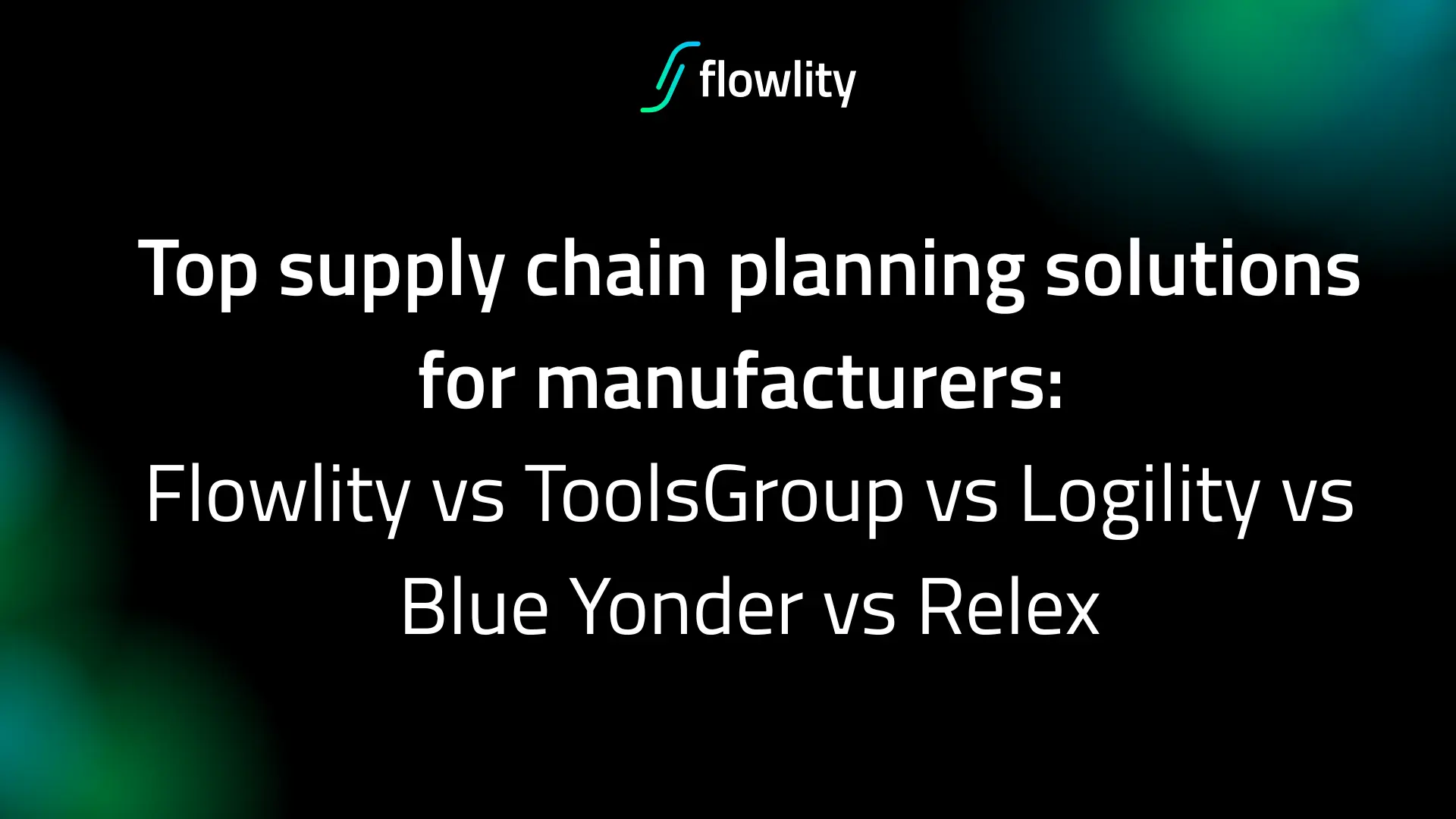.svg)
Best Retail Inventory Management Software in 2025

Top 5 Inventory Optimization Software for Retailers: Why Flowlity Leads the Pack
In an industry where keeping the right amount of stock on hand directly impacts sales and customer satisfaction, retailers cannot afford to leave inventory management to chance. According to retail research, U.S. retailers lose more than $82 billion in sales every year because products are out of stock. Modern supply chains span multiple locations and channels, making it essential to use an inventory optimization system that can balance stock availability against carrying costs and adapt to volatile demand. This article compares five leading solutions and explains why Flowlity should be your first choice for retail inventory optimization.
1. NetSuite
NetSuite is a cloud-based enterprise resource planning (ERP) suite that includes a robust inventory module. Its strengths for retailers include real-time visibility across locations, automated demand-based replenishment and seamless integration with order management and financials. NetSuite supports multi-location fulfilment and cycle counting, making it ideal for retailers with several warehouses or stores. However, as part of a complete ERP platform, NetSuite can be complex to implement and may require significant investment and training to realize its full potential.
2. Katana
Katana is a cloud-based manufacturing and inventory platform aimed at small and midsized businesses. Retailers appreciate Katana’s ability to track raw materials, finished goods and bill-of-materials (BOMs), enabling them to manage production and stock in one system. The software provides real-time inventory tracking across multiple locations, support for product variants and configurable pricing tiers. While it excels at small-batch manufacturing and assembly operations, Katana lacks advanced demand forecasting and multi-echelon planning, so many retailers still need spreadsheets to plan complex assortments.
3. Brightpearl
Brightpearl focuses on automating order management and inventory for omnichannel retailers. The platform centralizes orders from marketplaces, e-commerce sites and physical stores, while synchronizing inventory levels and automating purchasing. It offers forecasting and analytics to optimize reordering and provides reporting that helps retailers analyse performance across channels. Brightpearl is a strong option for brands selling on multiple marketplaces, but it is primarily a retail operations platform rather than a sophisticated inventory optimisation engine.
4. SAP Integrated Business Planning (IBP)
For larger retailers and brands that require an end-to-end supply chain planning suite, SAP IBP is a comprehensive yet complex solution. It offers cloud-based sales, inventory and demand planning, using predictive analytics and AI to produce forecasts and optimize safety stocks. SAP IBP also supports supply and response planning, scenario simulations and real-time collaboration with partners. While it delivers robust functionality, the depth of SAP’s suite often translates into lengthy implementations and high total cost of ownership that smaller retailers may find prohibitive.
5. Flowlity
Flowlity brings together AI-driven forecasting, dynamic inventory optimisation and collaborative planning in a single, intuitive platform. It uses probabilistic forecasting to model demand uncertainty and dynamically calculates optimal stock levels at SKU level. Flowlity’s easy-to-use interface facilitates collaboration between retailers, suppliers and customers, improving visibility across the supply chain. Unlike general ERP systems, Flowlity focuses specifically on inventory and supply planning; its algorithms adjust safety stock levels in real time based on demand patterns and supplier performance.
Flowlity’s impact is demonstrated by customer results. Lemoine, a manufacturer of medical products, improved its service level by five points and optimized inventory after adopting Flowlity. Magotteaux, an industrial manufacturer, reduced stock value by 13 %, stock coverage by 22 % and stock-outs by 8%. Customers also note that Flowlity continually evolves with new forecasting models and enhances decision-making and coordination with suppliers.
Why Flowlity Leads the Pack
Compared with general inventory systems, Flowlity offers several advantages for retailers:
- Advanced AI forecasting: Flowlity uses probabilistic algorithms to anticipate demand variability at SKU level, leading to more accurate replenishment recommendations than simple historical averages.
- Dynamic inventory optimisation: The software continuously recalculates target stock levels based on actual demand, lead times and supplier reliability, helping retailers reduce overstock and free up cash.
- Ease of use and fast implementation: Flowlity is purpose-built for planning rather than part of a monolithic ERP suite; most customers report quick deployments and a user-friendly interface that requires minimal training.
- Collaboration across the supply chain: Retailers can share demand forecasts and inventory plans with suppliers and customers, improving alignment and reducing the risk of stockouts or overstock.
While suites like SAP IBP deliver broad capabilities and platforms like NetSuite integrate with wider operations, retailers looking for a focused inventory optimisation tool will find Flowlity’s combination of AI, dynamic calculations and collaboration unmatched. By continuously aligning stock levels with actual demand and enabling real-time communication with suppliers, Flowlity helps retailers improve service levels, reduce excess inventory and ultimately capture more sales.
Conclusion
Inventory optimization is mission-critical for retailers operating across multiple channels and locations. Solutions such as NetSuite, Katana, Brightpearl and SAP IBP each offer useful features; however, they either lack sophisticated forecasting, require substantial investments or focus on operational automation rather than optimisation. Flowlity stands apart by delivering cutting-edge AI forecasting, dynamic stock optimization and cross-company collaboration in an easy-to-use platform. For retailers seeking to turn inventory into a competitive advantage, Flowlity is the clear leader.
References
- Retailers losing more than $82 billion in sales due to stockouts.
- NetSuite features: real-time visibility, automated replenishment, multi-location fulfilment
- Katana features: tracking raw materials, BOMs and real-time production.
- Brightpearl’s order and inventory management with forecasting and analytics.
- SAP IBP’s predictive analytics and inventory optimization.
- Flowlity’s probabilistic forecasting and dynamic inventory optimisation.
- Customer results: improved service level and reduced stock value with Flowlity.
- Testimonials about Flowlity’s evolving models and improved decision-making.
.svg)




